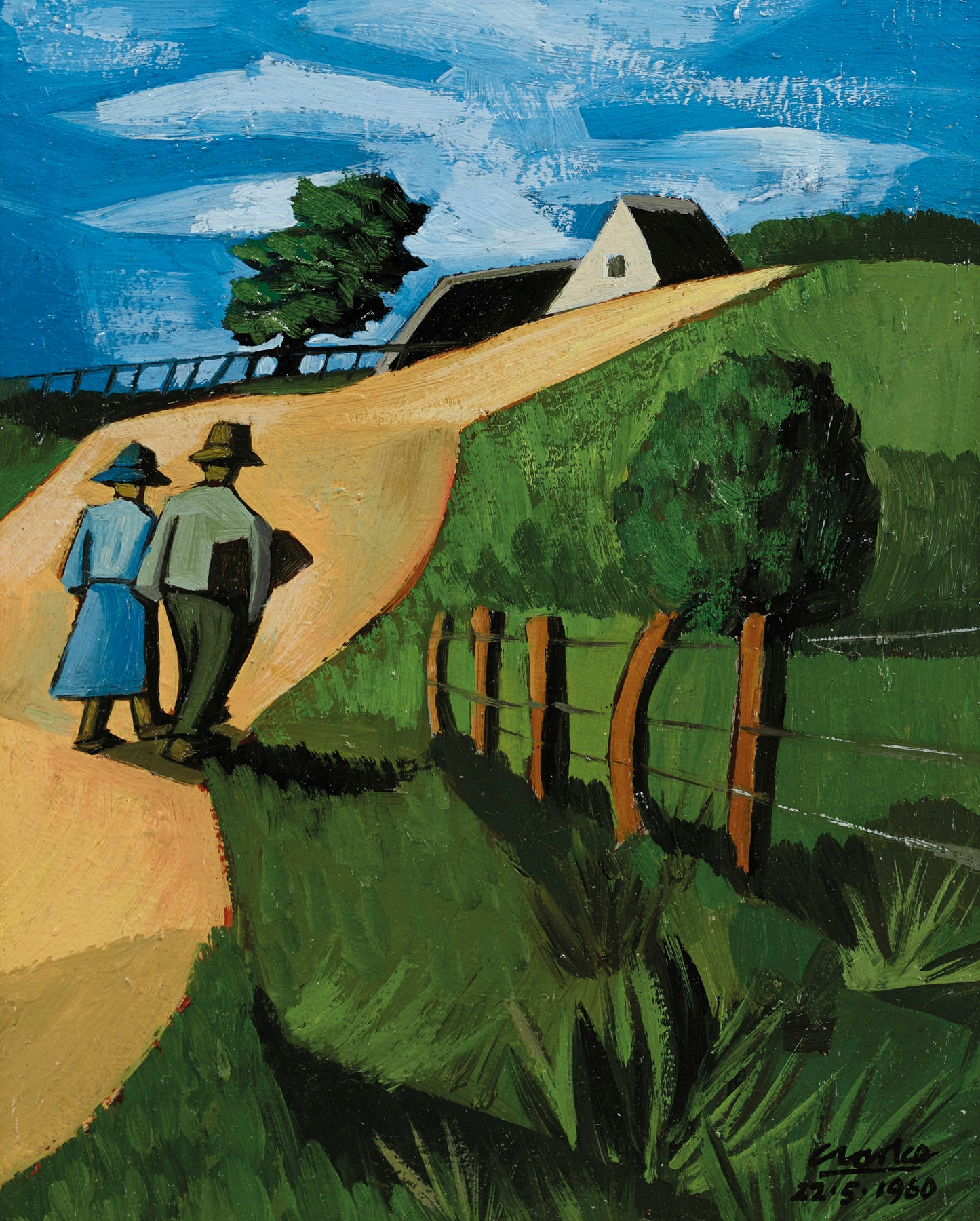Peter Clarke

Figures on a path dates from Clarke’s early Tesselaarsdal period, named for a black-owned farm near Caledon, which remained largely autonomous under the apartheid regime. A relative Eden, the farm allowed Clarke a momentary respite from the shadow of oppression. While his later paintings would come to reflect the increasing hardships of apartheid life, the Tesselaarsdal works offer a vision of bucolic calm. Of the farm, Clarke wrote, “my heart is in this place and I love it. That is so true and so definite.” While the painting was most likely made en plein air, it is less a study of the landscape than an invocation of peace; a pictorial metaphor of belonging.
b.1929, Simon's Town; d.2014, Ocean View
The late Peter Clarke’s paintings, prints, and poems offer an intimate window into life under the apartheid regime and the country's imperfect transition to democracy. An artist acutely sensitive to the poetics of the ordinary, Clarke played the role of ‘quiet chronicler’ and found in the domestic, everyday scenes around him a reflection of the historic moment. The many scenes Clarke depicted – both urban and rural – are at once document and symbol, as much images of place as they are of feeling. “I’ve been interested in space for a very long time,” he said of his peopled landscapes, “the spaces that separate people. The spaces that people have to traverse.” Such considerations would become particularly urgent to the artist. Clarke and his community were forcibly removed from their homes in the seaside suburb of Simon's Town to Ocean View in 1972.